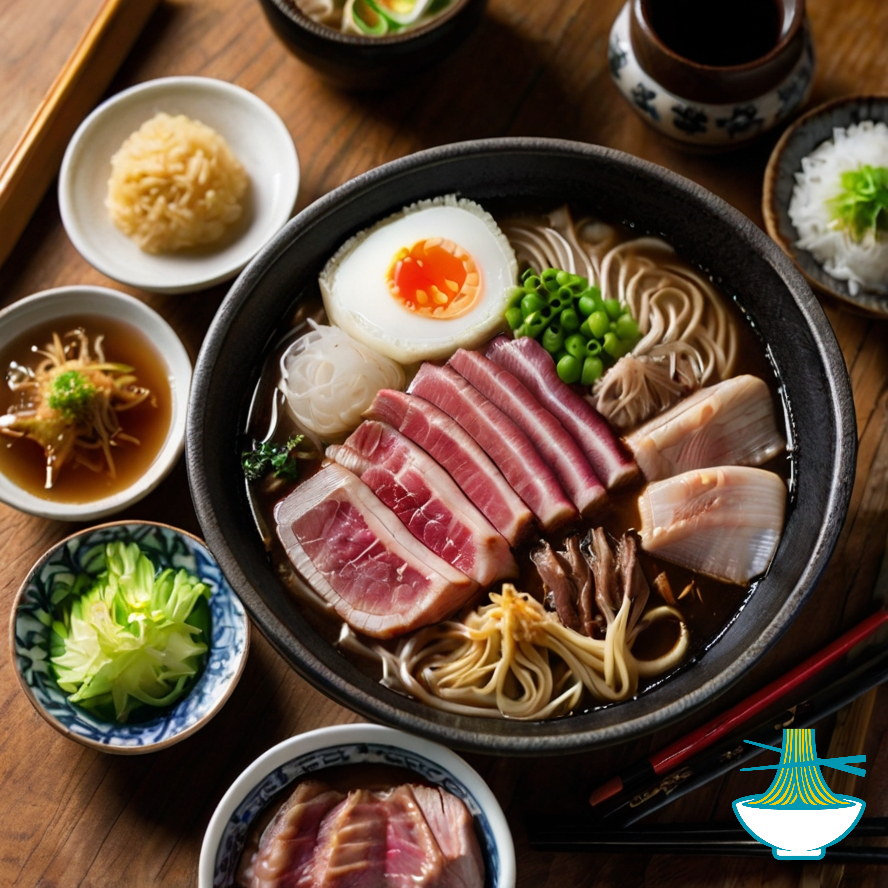Embark on a culinary journey through the rich cultural landscape of Japan with Sukiyaki, a quintessential Japanese hot pot dish that captivates the senses and delights the palate. In this immersive exploration, discover the history, ingredients, and techniques behind Sukiyaki, a beloved dish that has been cherished for generations.
Join us as we unravel the intricate layers of Sukiyaki's heritage, tracing its roots back to the bustling streets of Edo-period Japan. Learn about the art of thinly sliced beef, tender vegetables, and savory tofu simmered in a sweet and savory broth, creating a harmony of flavors that exemplify Japanese cuisine at its finest.
Immerse yourself in the sights, sounds, and aromas of traditional Japanese cooking as we delve into the intricacies of preparing Sukiyaki, from selecting the freshest ingredients to mastering the art of tableside cooking. Whether you're a seasoned food enthusiast or a curious culinary adventurer, our journey into the heart of Sukiyaki promises to awaken your taste buds and deepen your appreciation for Japan's rich gastronomic heritage.
Ingredients:
- 400g thinly sliced beef (such as ribeye or sirloin)
- 1 large onion, thinly sliced
- 1 bunch of green onions, cut into 2-inch pieces
- 1/2 Napa cabbage, sliced into bite-sized pieces
- 1 package of shirataki noodles (optional)
- 1 block of firm tofu, sliced
- 4 shiitake mushrooms, sliced
- 1/2 cup soy sauce
- 1/4 cup mirin (Japanese sweet rice wine)
- 1/4 cup sake (Japanese rice wine)
- 3 tablespoons sugar
- 2 tablespoons vegetable oil
- 2 cups dashi stock (you can use instant dashi powder mixed with water)
Instructions:
1- In a large skillet or sukiyaki pan, heat the vegetable oil over medium heat.
2- Add the thinly sliced onions and cook until they become translucent.
3- Add the sliced beef to the skillet and cook until it's browned on all sides.
4- Once the beef is cooked, add the mirin, sake, soy sauce, and sugar to the skillet. Stir well to combine.
5 -Pour the dashi stock into the skillet and bring the mixture to a simmer.
6- Arrange the green onions, Napa cabbage, shirataki noodles (if using), tofu slices, and shiitake mushrooms around the skillet. Allow them to simmer in the broth until they are cooked through and tender.
7- As the ingredients cook, use chopsticks or a ladle to mix them in the broth occasionally.
8- Once everything is cooked, serve the Sukiyaki hot directly from the skillet. Traditionally, diners take a piece of cooked beef or vegetable, dip it in raw beaten egg, and then eat it with steamed rice.
9- Enjoy your Sukiyaki with steamed rice and a side of raw beaten egg for dipping.
Sukiyaki is often enjoyed as a communal meal, where everyone gathers around the skillet to cook and enjoy the dish together. Adjust the ingredients and seasoning according to your taste preferences, and feel free to add other vegetables or ingredients you like.
Nutritional Values :
Here’s a detailed breakdown of the **Nutritional Values** and **Benefits** for the ingredients used in preparing this flavorful Japanese-inspired beef and vegetable dish:
Beef (400g):
- Calories: 1,000 kcal (approx. 250 kcal per 100g)
- Fat: 80g (approx. 20g per 100g)
- Carbohydrates: 0g
- Protein: 80g (approx. 20g per 100g)
Benefits: Provides high-quality protein, iron, and B vitamins. Supports muscle growth and repair.
Onion (1 large, ~150g):
- Calories: 60 kcal
- Fat: 0g
- Carbohydrates: 14g
- Protein: 1g
Benefits: Adds flavor and sweetness; contains antioxidants and vitamins.
Green Onions (1 bunch, ~100g):
- Calories: 30 kcal
- Fat: 0g
- Carbohydrates: 7g
- Protein: 2g
Benefits: Adds a fresh, mild onion flavor; rich in vitamins A and C, and provides some fiber.
Napa Cabbage (1/2 head, ~400g):
- Calories: 100 kcal
- Fat: 0g
- Carbohydrates: 24g
- Protein: 6g
Benefits: Provides vitamins K and C, fiber, and low-calorie bulk.
Shirataki Noodles (1 package, ~200g):
- Calories: 0 kcal
- Fat: 0g
- Carbohydrates: 0g
- Protein: 0g
Benefits: Low in calories and carbohydrates; adds texture.
Firm Tofu (1 block, ~200g):
- Calories:144 kcal
- Fat: 8g
- Carbohydrates: 4g
- Protein: 16g
Benefits: Good source of plant-based protein and healthy fats; contains iron and calcium.
Shiitake Mushrooms (4, ~100g):
- Calories:35 kcal
- Fat: 0g
- Carbohydrates: 7g
- Protein: 2g
Benefits: Adds umami flavor; rich in antioxidants, vitamins, and minerals.
Soy Sauce (1/2 cup, ~120ml):
- Calories: 20 kcal
- Fat: 0g
- Carbohydrates: 2g
- Protein: 2g
Benefits: Adds umami flavor with minimal calories.
Mirin (1/4 cup, ~60ml):
- Calories: 50 kcal
- Fat: 0g
- Carbohydrates: 11g
- Protein: 0g
Benefits: Adds sweetness and depth of flavor.
Sake (1/4 cup, ~60ml):
- Calories: 30 kcal
- Fat: 0g
- Carbohydrates: 0g
- Protein: 0g
Benefits: Adds complexity and flavor to the dish.
Sugar (3 tablespoons, ~36g):
- Calories: 144 kcal
- Fat: 0g
- Carbohydrates: 36g
- Protein: 0g
Benefits: Adds sweetness to balance the savory elements.
Vegetable Oil (2 tablespoons, ~28g):
- Calories: 240 kcal
- Fat: 28g
- Carbohydrates: 0g
- Protein: 0g
Benefits: Adds richness and helps in cooking; provides essential fatty acids.
Dashi Stock (2 cups, ~480ml):
- Calories: 20 kcal
- Fat: 0g
- Carbohydrates: 1g
- Protein:1g
Benefits: Adds umami flavor and depth; low in calories.
Summary of Nutritional Values:
- Total Calories:1,979 kcal (for the whole dish, excluding optional ingredients)
- Total Fat:116g
- Total Carbohydrates:68g
- Total Protein:105g
These values are approximate and may vary based on factors such as specific brands used and cooking methods.


Comments